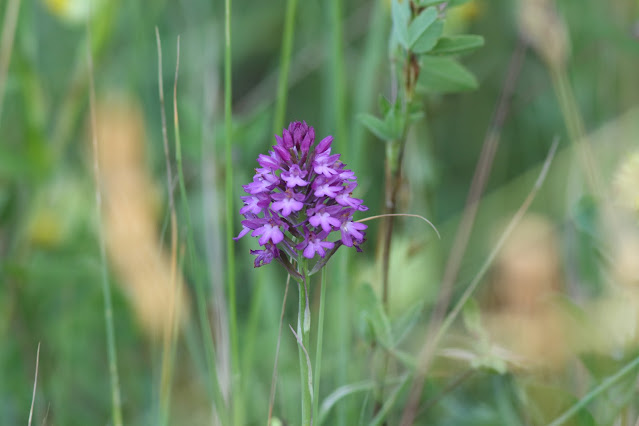As usual every week I do two or three days in London working on the tree and garden game and try to weave in a bit of birding/mothing stuff. This week I stayed in the straw bale barn at our business yard (as it is currently not rented out) and ran three moth traps at our HQ which is on the North Downs in an area of small holdings, chalk grazing meadows with areas of chalk grassland nearby. Wednesday evening I met up with Gillian and we had a look at Carshalton Pastures (an area of Chalk Grassland) and the Carshalton Lavender field.
Pretty standard fare in the work I had to look at, mainly hedge trimming this time of year but a lot of the gardens are looking great this time of year.
120 moth species over the two nights so not bad. A few highlights below.
Grey Arches, a lifer (two images above) and Dark, Light and Reddish Light Arches below (consecutive images)
Tawny-barred Angle I presume
White-line Sober type- Synopacma larseniella/taenolella - a gen dent job
A stunning well defined Mottled Beauty
Still working on these pugs (above and below) . Perhaps Shaded Pug (below).
Marbled White Spot- only the second one or so that I've seen
Cypress Carpet was well represented with five or six a night

This juvenile Starling woke me at at 500am after chatting to Matt to the small hours (about 1am) about stuff like how the ULEZ extending to our borough will affect our business and how we are being pushed along the net zero route even further for better or worse. Dieter Helm describes the current energy and cost of living crisis as the first Net Zero crisis so what with soaring inflation, the Brexit related labour shortages and trade obstacles plus the new net zero regulations coming in we (and all businesses) have an interesting journey ahead (I suspect a very challenging one but one potentially leading to a business environment with is more favourable to our business model). What with all the trees and gardens we maintain for wildlife, all the planting we do plus the recent land acquisitions and the circular waste economy we operate (the green waste we produce powers our business offices etc) I presume we must be both carbon positive and achieving net biodiversity gain already (or well on the way to it) but it would be good to get some comparable metrics on it all. We have our show/experimental/control gardens where we measure and monitor biodiversity but we don't have any similar ways of measuring our carbon. The Starling had somehow got into the wood burning stove by flying/falling down the flue.

Pyramidal Orchid at Carshalton Pastures- a couple of these in what is rather rough Chalk Grassland, dominated by tall grasses.

.JPG)
.JPG)






.JPG)





No comments:
Post a Comment